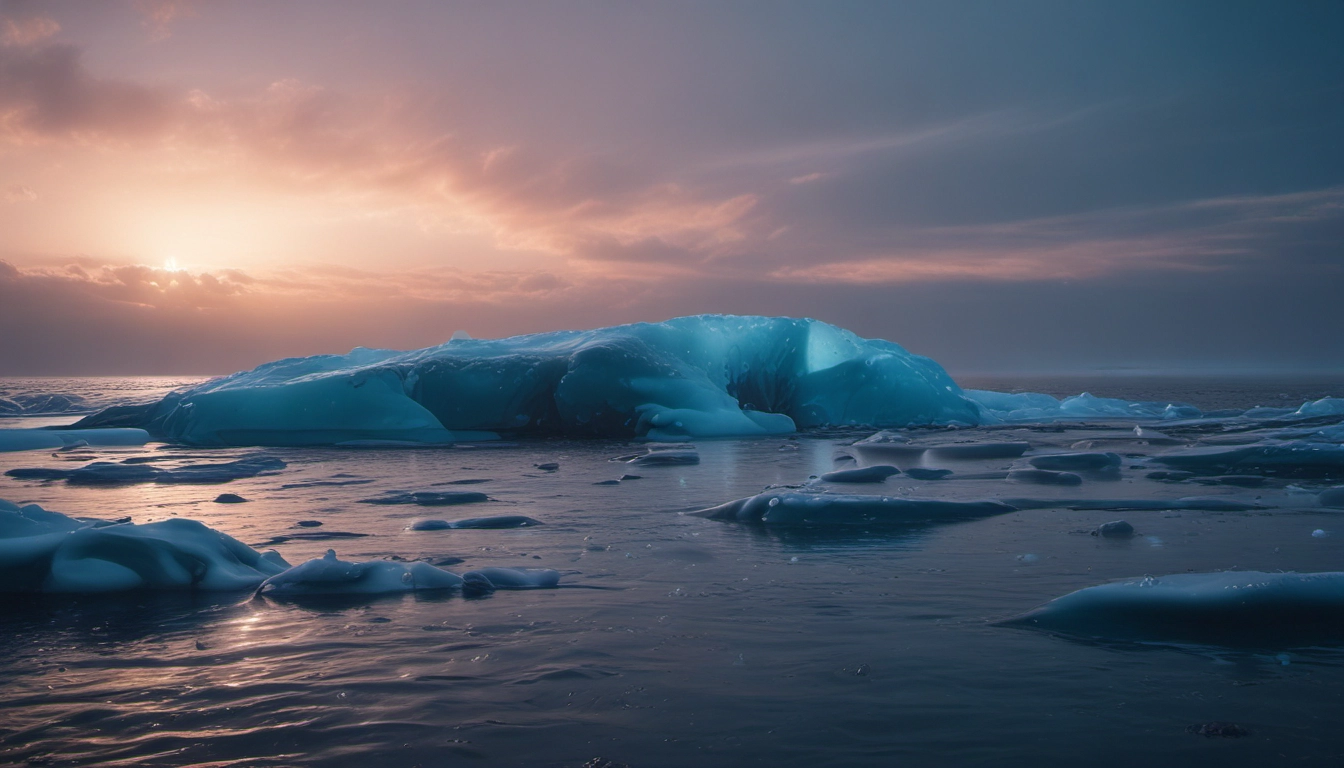Antarctic Methane Leaks: A Climate Doom Loop?
Scientists found dozens of new methane seeps in Antarctica. These leaks could speed short-term warming by creating a positive methane feedback loop.

Antarctic Methane Leaks: A Climate Doom Loop?
Short answer: Scientists have found dozens of new methane seeps in shallow Antarctic waters. This could change short-term warming estimates because methane is a powerful greenhouse gas and these leaks might form a positive climate feedback loop.
Key Takeaways
- Researchers mapped more than 40 new methane seeps in the Ross Sea area, highlighting growing antarctic methane leaks.
- Methane is much stronger than CO2 in the near term (about 80 times stronger over 20 years), so even small releases matter.
- The idea of an antarctic methane feedback loop is plausible, but the total global risk remains uncertain and needs more monitoring and study.
What did scientists find?
Teams using ship-based acoustics, remotely operated vehicles, and divers found bubbling spots on the seafloor. The peer-reviewed Nature Communications study reports dozens of seeps in the Ross Sea. Coverage is available from Live Science and CNN, and regional teams reported similar finds near the Antarctic Peninsula (Polar Journal).
Why is this a major concern?
Methane escaping from the seabed can dissolve in water or reach the atmosphere and trap heat. Because methane has high short-term warming power, added releases can speed warming for decades. If warming causes more leaks, and leaks cause more warming, that is a positive feedback loop sometimes called a "climate doom loop."
How methane leaves the seafloor
- Methane hydrates are ice-like crystals that trap methane in cold, high-pressure sediments.
- When water warms or pressure drops, hydrates can dissociate and release methane as gas or dissolved carbon.
- Geologic faults, cracks, and changes in ice weight can open pathways that let trapped gas escape as bubbles.
What are methane hydrates?
Methane hydrates form where low temperatures and high pressures keep methane locked in a solid matrix inside sediments. They exist along continental margins and in polar regions. Recent field campaigns confirmed that hydrates and free gas exist under parts of the Antarctic seabed, and that gaseous emissions can occur where hydrates destabilize (Polar Journal).
How a feedback loop could work
- Human emissions warm the atmosphere and ocean.
- Warmer water and reduced pressure destabilize subsea methane hydrates and free gas.
- Methane escapes into the water column and some reaches the atmosphere, increasing greenhouse forcing.
- Extra warming from that methane causes further hydrate destabilization, repeating the cycle.
How big is the risk?
The new study warns that Antarctica's role in global methane emissions has been underexplored and should be included in climate assessments (Nature Communications). However, the total inventory of Antarctic subsea methane is not fully mapped. Past work in the Arctic found tens of thousands of seeps, but a sudden, planet-wide methane "bomb" is considered unlikely by many experts. The main worry is that steady increases in leaks could raise near-term warming and complicate meeting climate targets.
What scientists recommend now
- Scale up monitoring around Antarctica with repeat surveys, sensors on ships, and satellite-linked measurements (Earth Sciences NZ).
- Include shallow coastal seeps in climate models to test short-term warming scenarios.
- Speed up cuts to human methane and CO2 emissions to lower the chance that warming triggers larger natural releases.
One data point and one practical implication
Data point: Researchers found more than 40 new methane seeps in the Ross Sea, many at spots that were studied before and showed no seeps (Live Science). Practical implication: Climate modelers should add scenarios that include Antarctic seep growth to short-term warming tests so policymakers can set faster, targeted emission cuts.
FAQ
Will Antarctica release a "methane bomb"?
"Methane bomb" is a dramatic phrase. Current evidence suggests a sudden, global-scale methane explosion is unlikely. Still, rising leaks could increase warming over decades and make climate goals harder to reach.
Can we stop these leaks directly?
Not today. We cannot turn off natural seepage. The best tools are rapid cuts to human greenhouse gases to limit warming and more monitoring to predict and prepare for changes.
Where can I read the science?
Start with the Nature Communications paper and reporting by CNN and Live Science. Regional commentary is available from Polar Journal and Earth Sciences teams (Earth Sciences NZ).
"If shallow water methane seeps reported here follow the behavior of other global seep systems, there is the potential to initiate, or contribute to, positive climate feedbacks with global consequences." Nature Communications
Bottom line: New findings about antarctic methane leaks and methane seeps antarctica matter. They do not prove a sudden catastrophe, but they change risk calculations. We need more maps, more sensors, and faster cuts to human emissions to reduce the chance that natural greenhouse sources amplify warming.

